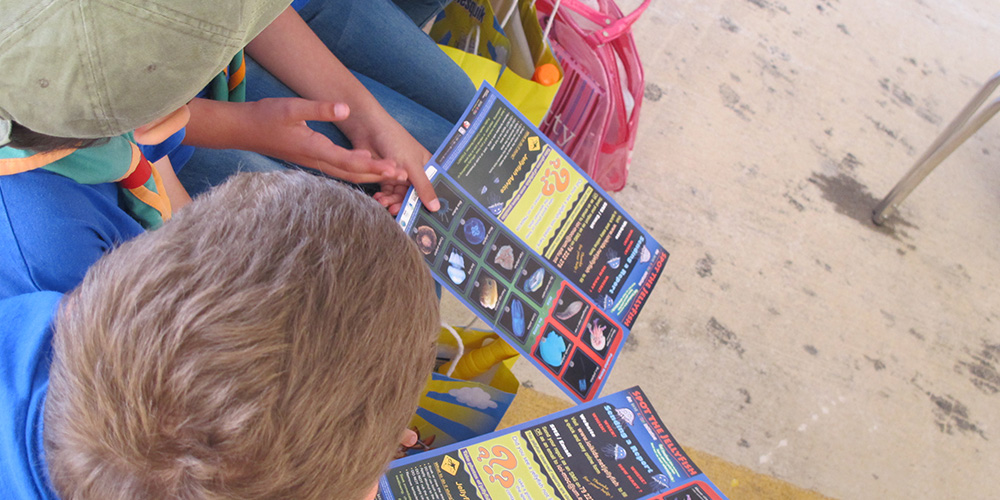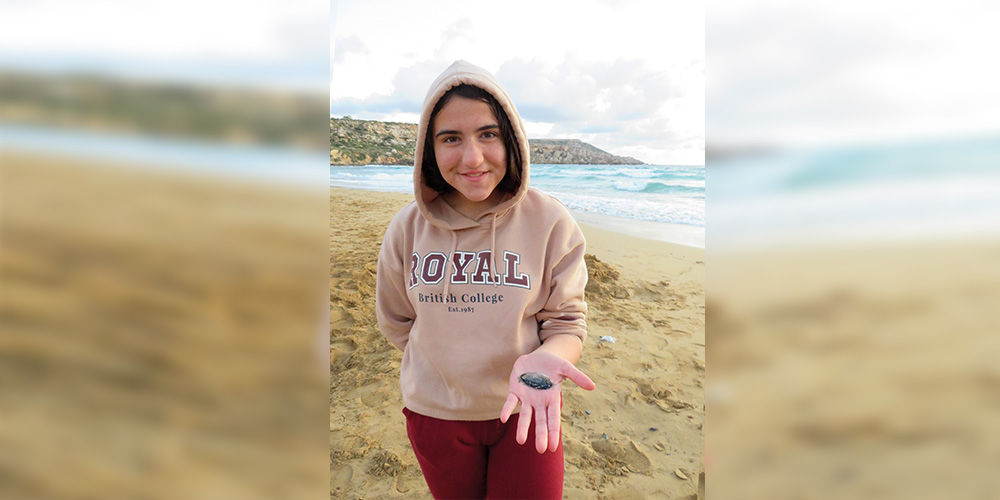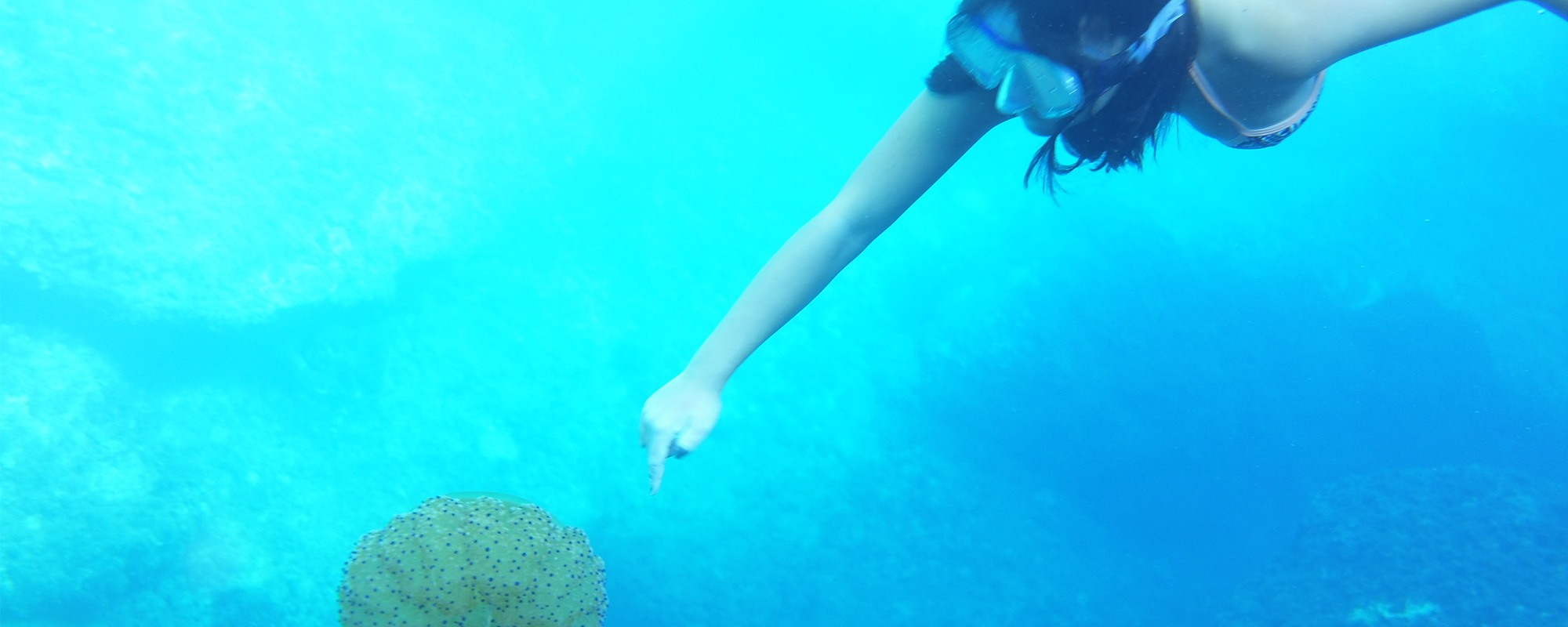The unpalatable reputation of jellyfish as nasty stingers (although few are) can impact tourism. Prof. Alan Deidun writes about how jellyfish capture the collective imagination: their grace and beauty, their power station-stopping capabilities, and how scientists can learn from children.
If you’re planning to swim, jellyfish photos on seaside boards spell bad news. But take a closer look, and you may find yourself enrolled… as a jellyfish-spotting citizen scientist! The national Spot the Jellyfish citizen science campaign is on a perpetual hunt for the assistance of willing beach-goers and sea buffs to document the presence (or absence) of jelly critters in Maltese waters. Over the years, enthusiastic citizen scientists, young and old, have helped make important discoveries.
What’s so intriguing about jellyfish to justify a ten-year-long campaign just to document their occurrence? Beauty is obviously in the eyes of the beholder. For some, including scuba divers with underwater cameras, jellyfish are the ultimate personification of grace. Despite their apparently frail nature, jellyfish are resilient creatures, having been around for over 700 million years, pre-dating dinosaurs by a stretch. Their population is surging due to the changing ocean environment, rising sea temperatures, nutrient runoff from land, overfishing, and the proliferation of artificial structures (such as offshore platforms and concrete walls in harbours). Jellyfish can easily spoil a day at the beach, and in countries like Israel and Turkey, nomadic jellyfish blooms have shut down power stations and have led fishers to discard their catches. Jellyfish are not a trivial matter.
From finding species to treating stings
Our research group is based at the Department of Geosciences (University of Malta [UM]). By working with citizen scientists, we have made many scientific findings. We identified many species previously unseen in Maltese waters. Campaign participants spotted nomadic jellyfish (Rhopilema nomadica), the Australian spotted jellyfish (Pyllorhiza punctata), the upside-down jellyfish (Cassiopea andromeda), and the egg-yolk jellyfish (Phacellophora camtschatica). They also found mesmerising siphonophore colonies (deep-sea predators that look like threads), including the hula skirt siphonophore (Physophora hydrostatica) and the barbed wire jellyfish (Apolemia uvaria). As a result, the campaign has greatly bolstered the kaleidoscope of jellyfish species known from Maltese waters, from 35 to nearly 50 species.
But the scientific contribution made by the Spot the Jellyfish citizen science campaign is not restricted to documentation. With this ever-growing dynamic team, we identify seasonal trends in the abundance of different gelatinous species within the same waters. By painstakingly documenting jellyfish presence/absence in Maltese waters since June 2010, Spot the Jellyfish allows us to tease out seasonal trends. The by-the-wind sailor (Velella velella, ‘qlugħ’ in Maltese), a floating colony of polyps which resembles a veritable living sailing boat, blooms in local waters in February to April. As highlighted in a recently-published paper in the Journal of Coastal Research (Gatt et al., 2018), it blooms almost concurrently with the mauve stinger (Pelagia noctiluca). The flamboyant fried-egg jellyfish (Cotylorhiza tuberculata) blooms over the August-November period, depending on weather patterns. When winter is dry and calm (like in early 2020), the mauve stinger appears earlier and in greater numbers.

The most common jellyfish species’ seasonal fluctuations showcase long-term impacts of climate change and human activities. Besides, knowledge of these patterns can assist coastal managers (e.g. beach lifeguard teams and tourism authorities) and, ultimately, swimmers. These sea buffs have really helped us peg down jellyfish patterns to help everyone.
We work with governmental authorities to give back to the community that helps us so generously, and this requires venturing out of our comfort zone. The campaign fosters beach management and ocean literacy by creating, in conjunction with the campaign’s main sponsors – the Malta Tourism Authority and the International Ocean Institute – a jellyfish sting treatment booklet (outcome of the EU-funded project MEDJELLYRISK).
Despite their apparently frail nature, jellyfish are resilient creatures, having been around for over 700 million years, pre-dating dinosaurs by a stretch.
The booklet gives first aid advice on treating common jellyfish stings. We regularly re-print the booklet, available digitally on the campaign website. The same booklet helps debunk a number of myths about jellyfish stings, including the ‘one-size-fits-all’ approach, namely, that all of them can be treated with vinegar. In reality, sting treatment is a customised affair, with vinegar representing just one of many sting treatments.
The Spot the Jellyfish team regularly publishes bulletins in mainstream media to draw the limelight to public health hazards by some jellyfish species, especially the Portuguese man o’ war (Physalia physalis), responsible for a number of human fatalities each year, but rarely recorded in Maltese waters. A jellyfish Q&A flyer is also downloadable through the campaign website, based on edutainment tools from activities regularly organised by the campaign’s team on beaches, in summer schools, and along the seaside.
I spot, you spot, we all spot them
Encouraging people to document jellyfish while at the beach wasn’t easy. Not all jellyfish are the same, yet the Maltese language lacks a specific word for the mauve stinger, the most abundant species. The only term is brama, which means any jellyfish.
And yet, the work has paid off. Citizen scientists in Malta have filed over 3,000 reports during the campaign’s 10-year-long stint. On average, we receive a jellyfish report every single day, although the reporting rate fluctuates greatly on a seasonal basis, from five or even ten a day in summer to none on stormy days.

The data gathered by citizen scientists need to be verified. Without proving that the data are solid, all that hard work can go to waste. This was very time-consuming for us, but worthwhile. We pruned out any duplicate records, or far-fetched reports of species unsubstantiated by photographs. Once validated, a report is automatically plotted onto an online map of the Maltese Islands, which spatially shows all of our reports. We have validated around 80% of the reports received, providing timely feedback to all our contributing citizen scientists. That in itself is already a feat!
A decade-long campaign can suffer from burnout. To keep the project alive and kicking, Dr Adam Gauci (UM), a computer scientist, has developed an image analysis algorithm to automate validation. The algorithm has been trained on a plethora of identified jellyfish photos held within the Spot the Jellyfish database. The algorithm’s outputs closely match those of a human validator. We are confident that we can incorporate it within a smartphone app or at least within our campaign website in the coming months. The campaign’s team is also collaborating with colleagues from Spain and Chile to formulate a jellyfish bloom forecasting model, which would identify the most congenial period and site for a jellyfish bloom, giving beach users and management authorities a heads-up. Aquaculture is on the radar too, given its local economic importance and potential for future growth. The campaign’s team participated in a regional effort to assess the impact of jellyfish blooms on the operations of aquaculture facilities by interviewing workers within such operations.
Hard work pays off
What makes such a mammoth endeavour worthwhile? The campaign has inspired a generation of young citizen scientists through rather unloved creatures. Children have made some of our more remarkable discoveries. A 12-year-old French tourist on holiday at Dwejra, Gozo, first recorded the blue button (Porpita porpita), leading to a research paper. Jellyfish reports sent in by citizen scientists have results in a myriad of other scientific papers, including those documenting the first ever record of alien jellyfish species in our waters, including the nomadic jellyfish (Rhopilema nomadica), the Australian spotted jellyfish (Phyllorhiza punctata), and the upside-down jellyfish (Cassiopea andromeda – Deidun et al., 2018).
Children are our most prolific repeat contributors. Many aspire to become marine biologists. Take my son, 9-year-old Adonai, whose first report dates back to 2017, when he was just six. Every year, he has consistently submitted jellyfish reports, handling jellyfish directly after watching fishers at Marsaxlokk doing it (and getting stung a number of times in the process). My twelve-year-old daughter Ylenia inspired us back in 2018 when she swam in a soup of fried egg jellyfish within the narrow creek of Wied l-Għasri in Gozo. For 11-year-old Miguel, jellyfish are so fascinating that he started drawing them in the most outstanding and realistic renditions I’ve seen of these gelatinous critters. These young people ventured out of their comfort zone by overcoming a natural fear of jellyfish and empowering themselves.
Citizen scientists in Malta have filed over 3,000 reports during the campaign’s 10-year-long stint.
Convinced? Well then, jump on board and start spotting jellyfish. The submission of a report to the Spot the Jellyfish campaign is, literally, child’s play, as a result of the multitude of platforms one could use. You can submit a report on the campaign’s website in less than a minute, but if you prefer, you can also use the campaign’s social media page, smartphone app, or email address (aliensmalta@gmail.com).
Further reading:
Bosch-Belmar, M., Azzurro, E., Pulis, K., Milisenda, G., Fuentes, V., Yahia, O.K.D., Micallef, A., Deidun, A. and Piraino, S., 2017. Jellyfish blooms perception in Mediterranean finfish aquaculture. Marine Policy, 76, pp.1-7.
Deidun, A., Gauci, A., Sciberras, A., & Piraino, S. (2018). Back with a bang–an unexpected massive bloom of Cassiopea andromeda (Forskaal, 1775) in the Maltese Islands, nine years after its first appearance. BioInvasions Records, 7(4), 399-404.
Gatt, M. P., Deidun, A., Galea, A., & Gauci, A. (2018). Is citizen science a valid tool to monitor the occurrence of jellyfish? The spot the jellyfish case study from the Maltese Islands. Journal of Coastal Research, SI85, 316-320.





Comments are closed for this article!